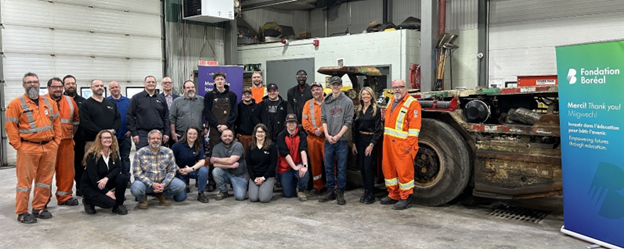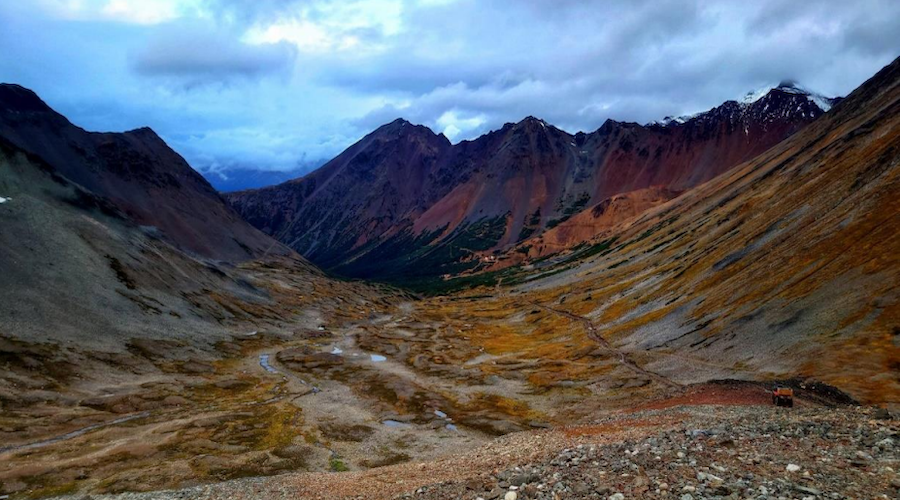Wabun chiefs at the forefront of resource revenue sharing in Ontario
In April 2018, the Ontario government signed resource revenue sharing (RRS) agreements with three First Nation organizations, Grand Council Treaty #3, Mushkegowuk Council and the Wabun Tribal Council, representing 32 First Nations across Northern Ontario.
Starting in the fall of 2019, partner First Nations will receive 45% of government revenue from forestry stumpage, 40% of the annual mining tax and royalties from active mines at the time the agreements were signed, and 45% from future mines in the areas covered by the agreements. RRS agreements will provide a source of funding for First Nations to allocate towards key priorities, such as economic development, education, health, infrastructure, community and cultural initiatives.
Throughout areas with high mineral and forestry activities, developing a framework for RRS has been a priority for First Nation leadership for decades. The traditional and treaty territory of Wabun’s member First Nations (Brunswick House Frist Nation, Chapleau Ojibwe First Nation, Flying Post First Nation, Matachewan First Nation, Mattagami First Nation), which includes the Timmins and Kirkland Lake areas, is deemed to be one of the most prolific and longstanding mining jurisdictions in Canada.
Over the years, many models of resource revenue sharing have been discussed among First Nation leadership and the provincial government, among them, Ontario-wide and treaty-based arrangements. First Nations were left to resolve difficult internal conversations around distribution formulas such as approaches based on population, equal distribution, remoteness quotients, as well as proximity to resource extraction activities. Coming to the compromise necessary to advance those discussions proved difficult.
It was always the firm position of Wabun’s chiefs that RRS should benefit the First Nations impacted by specific projects. First Nations have different opportunities based on their location. For example, some have negotiated lucrative agreements with hydro-electric producers, while others are in areas where land value and leasing opportunities are more prominent. Wabun’s First Nations carry the advantage of being located on mineral-rich land, therefore they should benefit from those opportunities directly.
Wabun suggested in high-level discussions that a more local approach was preferable, and that we were a willing partner to negotiate a regional agreement with the province. The debate over which distribution model suited the Wabun communities was kept internal (without government), and our chiefs settled quickly and amicably on a combination of equal distribution (for forestry) and proximity (for mining). Wabun’s First Nations endorsed this sharing model as one that respects those communities whose territorial interests are impacted. In short, communities participate at levels that directly correspond to the revenues achieved from their respective traditional lands.
Wabun’s First Nations have lived at the fringes of resource development for the last 100 years with little or no say in how or when mines were developed. Today, however, our First Nations participate in all stages of the mining lifecycle from early exploration, to mine development and operations and finally, closure and rehabilitation. So long as mining is done in a way that respects the traditional values and input of the local First Nations communities, implement the best environmental standards, creates employment and training opportunities for members, provides opportunities for economic development, and commits meaningful financial benefits, Wabun’s First Nations can and will support resource extraction activities to the mutual benefit of the broader Ontario economy and mining industry.
It wasn’t until the late 2000s when Impact Benefit Agreements (IBAs) became prevalent, that our First Nations were provided the opportunity to benefit from mining. IBAs are built on the principle that mining causes impact to the land and in return those impacts must create benefits. Notably, Wabun’s First Nations have successfully negotiated and signed IBAs with Imerys Talc, Goldcorp, Kirkland Lake Gold, Tahoe Resources and a few others. As a result, many of the Wabun First Nation communities have transitioned from poverty to relative prosperity. For those members seeking work, there are meaningful employment opportunities. Postsecondary education rates have increased significantly as communities invest in university and college tuitions for their youth. On the entrepreneurial side, sustainable communityowned businesses have been created, providing further employment opportunity and own-source revenues that reduce the dependency on government funding.
Resource revenue sharing should not impact our ability to negotiate IBAs with corporations wishing to develop projects within the territory of our First Nations. IBAs and RRS have a different a purpose. While IBAs are intended to create benefits to compensate for impact, RRS is an important step towards reconciliation. It is a demonstration of Nation-to-Nation relationships between the Crown and Indigenous Peoples, and an acknowledgement of the treaty relationship. Nonetheless, it is built on the sharing of a profit-based tax, which should incentivize First Nations to work meaningfully with mining companies with the success and development of existing and prospective projects. At present time, Ontario’s RRS agreements are among the most progressive in Canada, and their completion should be celebrated as a long overdue and important milestone for the government and First Nations. It has not, I believe, been given the platform and spotlight it deserves.
STEPHANIE LABELLE is mineral development advisor for Wabun Tribal Council.





Comments